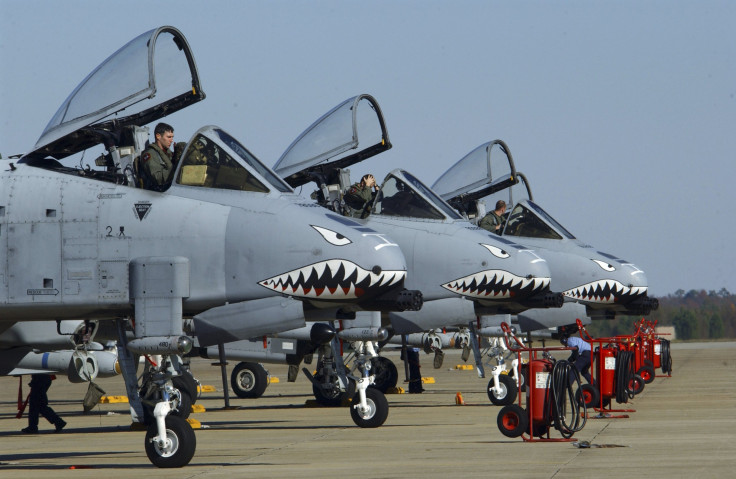U.S. A-10 Thunderbolt Trains With Romanian MiGs, United Against Russia

In the last 15 years of the Cold War, the American A-10 Thunderbolt and the Soviet-built MiG-21 occupied hangars on either side of the Iron Curtain, waiting to pounce. The lumbering, heavily armed A-10 would have gone after Warsaw Pact tanks and troops; the nimble MiG fighter would have tried to shoot it down. But two decades later, they are taking part in exercises side by side, staged by the U.S. and Romania, in an attempt to deter renewed Russian hostility across the former satellite states of the Soviet Union.
The exercise, which is part of a broad, cross-continental mission known as Operation Atlantic Resolve, is designed to be a show of force against a Russia that annexed Crimea in March 2014 and continues to assist pro-Russian rebels in East Ukraine. Recent deployments have seen the U.S. military train with local forces in the Baltic and Balkan states, as well as Germany, Poland and Ukraine itself.
As part of those operations, the A-10 has been deployed to Germany, the United Kingdom, Poland and now Romania.
Speaking last month, Gen. Frank Gorenc, commander of U.S. Air Forces in Europe, welcomed the aircraft’s inclusion into operations.
“There's a lot of exercising going out there, and we intend to support the Army to the maximum extent possible in this endeavor," he said. "This [theater security package], particularly in the form of the A-10, is going to be very, very useful."
Interestingly, the deployment of the A-10 to the Campia Turzii air base to team up with the MiG-21 brings together two aircraft that not only survived the Cold War but have miraculously overcome the test of time and the swinging ax of defense cuts.
The A-10, which was produced between 1972 and 1984, has escaped several attempts by the Air Force itself to send it to the scrapyard in favor of newer, but less specialized, jets. Efforts to scrap the aircraft, built to destroy Soviet tanks, have been consistently rebuffed by its congressional supporters, who believe that it continues to offer the best close air support for troops on the ground.
Its main supporters, Republican Senators Kelly Ayotte and John McCain, have fought against forced defense sequestration that comes as part of the 2016 defense budget. Scrapping the A-10 would save the Air Force $4 billion over five years.
The Air Force contends that the F-35, due to become operational between 2021 and 2023, will be able to perform the same job. However, McCain, who is the Senate Armed Services Committee chairman, says that while the F-35 may offer similar close air support in years to come, those capabilities “remain to be seen.”
In addition, a letter signed by a group of nine Republicans was recently delivered to McCain, calling for him to do everything he can to keep the aircraft off the defense chopping block.
"We still need CAS [close air support] aircraft that can fly low and slow, beneath bad weather, close enough to the point of ground combat, and survive," the letter said. “The Air Force has not persuaded us that it can prematurely divest the A-10 -- our nation’s most combat-effective and cost-efficient [CAS] aircraft -- without putting our ground troops in serious additional danger.”
But if the A-10 is a Cold War relic, the MiG-21 is even older: It fought in the Vietnam War. First flown in 1959, it developed into the biggest export success of Soviet military aviation, with nearly 12,000 produced, and it found its way to air forces across Eastern Europe, Africa and Asia, including North Korea, Syria, Libya and even Afghanistan.
Very fast, agile and very dangerous in the right hands, the Fishbed -- as it's known in the NATO code name system -- inflicted heavy losses on the Americans in Vietnam. The version flown today by the Romanians is heavily modernized, but it's really only flying because the cash-strapped nation could not afford newer fighters. Most of its ex-Communist neighbors have scrapped their Fishbeds and chosen Western jets.
Romania currently has only 36 operational MiG-21s out of the more than 100 it upgraded.
© Copyright IBTimes 2025. All rights reserved.






















